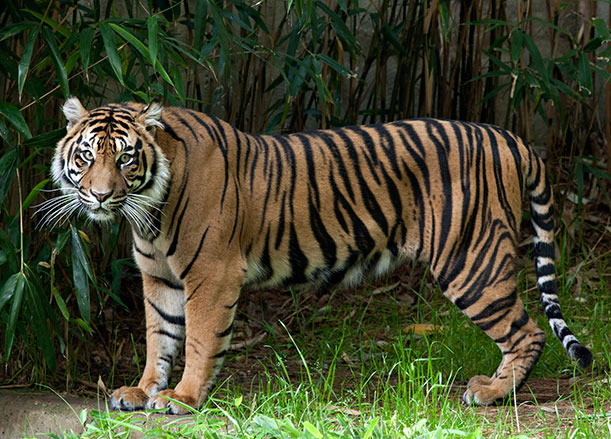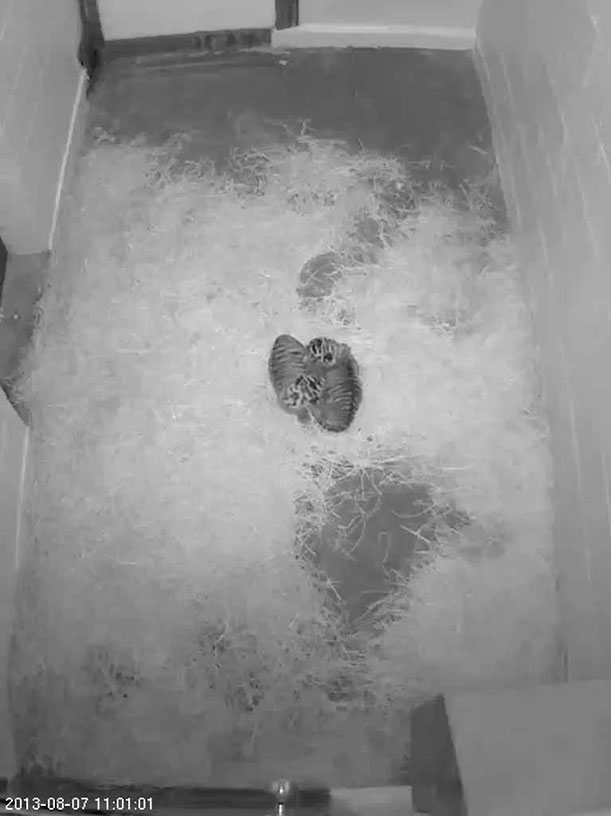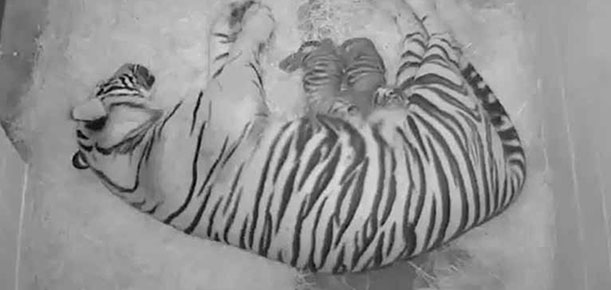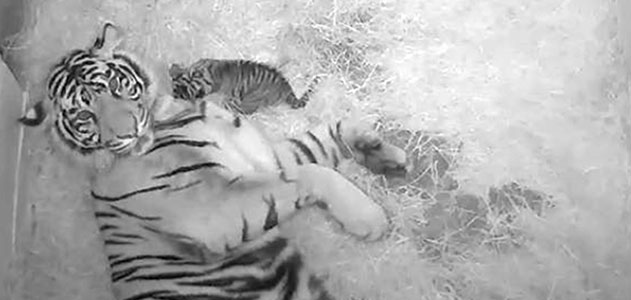Sumatran Tiger Cubs Born at the National Zoo
The Great Cats team at the zoo is celebrating a conservation victory with the birth of two Sumatran tiger cubs
Damai and her two tiger cubs, born Monday. Image courtesy of National Zoo.
The National Zoo’s female 4-year old Sumatran tiger, Damai, gave birth to two cubs on Monday, an event that hasn’t occurred at the Zoo since 2006. Keepers say that the cubs appear healthy and have even observed Damai grooming her young.
According to Zoo reports, biologist Craig Saffoe observed that the celebratory moment came after two years of “perseverance.”
“All I can do is smile,” Saffoe wrote, “because the team has realized our goal of producing critically endangered tiger cubs. Damai came to us as a young tiger herself, so it’s really special to see her become a great mom.”
The World Wildlife Fund reports that there are fewer than 400 Sumatran tigers remaining in the wild. The animals inhabit the Indonesian island of Sumatra, where their numbers were once so numerous that early 20th-century Dutch Colonists complained of the animals boldly intruding into their estates. Sumatran tigers are the smallest of the nine tiger subspecies, three of which have already become extinct. Fifty percent of Sumatra’s forest land has been lost over the past 25 years, this combined with poaching continue to threaten the species as a whole.
Tigers have a gestation period of 100 to 112 days, and typically deliver two to three two-pound cubs, who nurse until they are six months old. Over the next 18 months the cubs gradually step up to independence, and at about two years of age they head out alone to establish their own territory.

The National Zoo’s Damai gave birth to two cubs on Monday. Photo by Mehgan Murphy, National Zoo
Damai arrived at the Zoo in 2011. At the time, Zoo officials reported that her genetics made her a “highly valued animal” within the Species Survival Plan, a program that monitors and oversees the breeding of captive animals. Damai was sent to the Zoo because of its long history of success in breeding Sumatran tigers. Its female Soyono, which died last November at age 19, delivered three litters over her lifetime.
Kavi and Damai were first introduced to one another in the fall of 2012, and initially, were only allowed visual contact through a door that keepers dubbed the “howdy gate.” Eventually the two were brought together when Damai went into heat this past November.

The two cubs will be out of public sight for months until they pass a series of health exams. Photo courtesy of National Zoo.
Last year as Damai settled in, her keepers started a diary, observing her behaviors. One entry last January documented her interactions with her new mate, the 12-year-old Kavi: “We would wait until both cats had settled down in their respective enclosures and then open the door that separated them. . . . By the time Damai started to cycle again she was much more confident and relaxed with Kavi. Even with her confidence rising along with her hormone levels Damai was not entirely cooperative. There were still a few false starts and just as before when the fur flew, it always seemed to be Kavi’s fur, not Damai’s. There was never any serious damage done, but still Kavi’s patience and self control have been very impressive. We and Damai are very lucky to have him.”

These are the first tiger cubs born at the Zoo since 2006.
The cubs are scheduled to be out of sight for the next several months until they pass a series of health exams but according to Zoo staff Kavi will still be on exhibit as usual.
For the curious, there may be a chance to see the newborn tiger cubs via the Zoo’s live webcams. This of course all depends on Damai. She has the option of moving her young ones to the indoor tiger enclosure and if she decides to move, the cubs will be out of range of the webcams.
